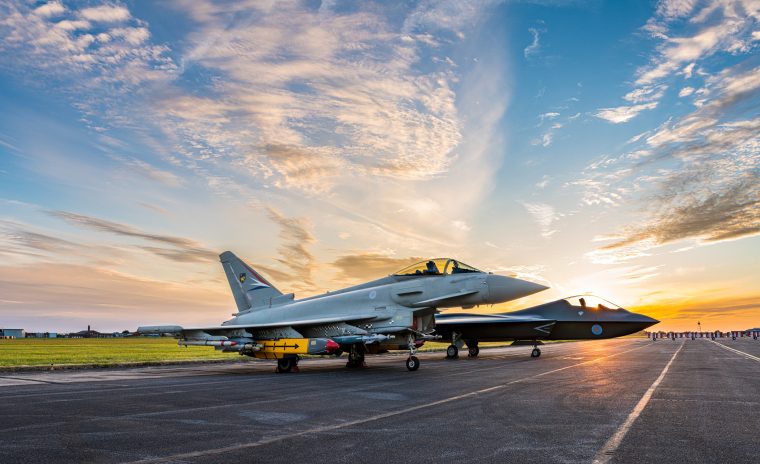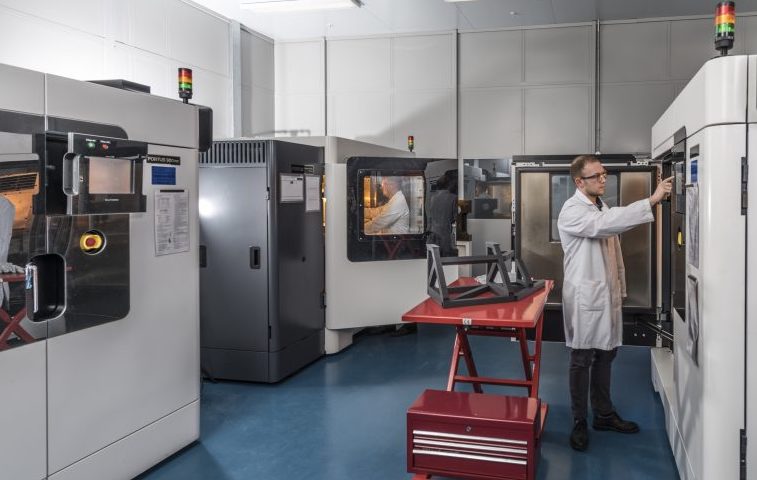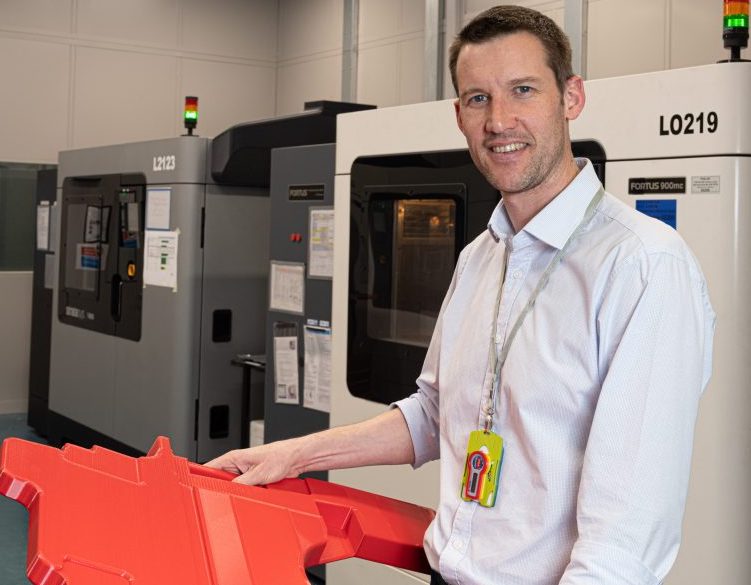Multinational aerospace company BAE Systems has announced the installation of its fourth Stratasys F900 system, as the business continues to drive down costs as part of its ‘Factory of the Future’ initiative.
Installed at the defense contractor’s manufacturing site in Samlesbury, UK, the 3D printer will be used to produce prototypes, tooling, and end-use parts for the company’s fighter jet aircraft. In a broader effort to improve the agility of its production processes, BAE Systems is hoping that the new Stratasys 3D printers will significantly reduce its costs and lead times compared to those of its existing manufacturing methods.
“Our Factory of the Future program is all about driving the future of fighter aircraft production with disruptive technologies, and we’re working closely with our suppliers and the wider industry to meet the challenges the UK Government has set out to us,” said Greg Flanagan, Additive Manufacturing Operations Lead of BAE Systems Air.
“Stratasys Fused Deposition Modeling (FDM) additive manufacturing plays an important role in this initiative, as it helps us meet our overall company objectives to reduce costs and time-to-market.”

BAE Systems in the 3D printing industry
Based in London, UK, BAE Systems designs, develops and manufactures complex surface ships, combat vehicles, and security systems. Reportedly, the company has been developing additive manufacturing technology for 20 years, leading it to integrate 3D printed components into its Typhoon fighter jet aircraft, amongst a range of other applications.
Initially, BAE worked with researchers from a number of UK universities to develop new areas for 3D printing to be utilized in. Working with Cranfield University, for example, the defense company developed new fighter jet parts using Wire Arc Additive Manufacturing (WAAM) technology. This was followed by research carried out with the University of Manchester, which saw the team produce the “first vehicle in aviation history” to be maneuvered in flight using supersonically blown air.
More recently, the defense contractor has entered into a series of partnerships, in an attempt to bring the benefits of this innovation onto the factory floor. Earlier this year, BAE signed a Memorandum of Understanding with UK-based metal 3D printer manufacturer Renishaw for this reason. Working together, they aimed to improve performance, reduce costs, and speed up the production of its combat aircraft systems.
Stratasys also has a close relationship with BAE Systems, and the pair agreed to collaborate more closely in an agreement signed in August 2019. BAE has been a Stratasys customer since 2006, and by strengthening its ties with the company, it has been given “increased access” to developing 3D printing technologies and materials. Now, as part of its cost-saving Factory of the Future initiative, BAE is further utilizing Stratasys’ 3D printing systems to drive efficiency within its aircraft production facilities.

The Factory of the Future initiative
BAE Systems’ new Stratasys F900 3D printer will be housed in the defense company’s Lancashire complex, where it will run “around the clock” to drive more efficient production. The Factory of the Future project aims to bring together the latest advances in technology and manufacturing with its human operators, in a seamless, fully-connected way. More than 40 blue chip, SME businesses, and academic institutions are collaborating with BAE to make this happen, and its latest deal with Stratasys is designed to further these goals and drive industry 4.0 innovation.
Stratasys FDM 3D printing is currently utilized across BAE’s existing aircraft ground equipment operations within a wide range of applications. These include creating space models, designing verification prototypes, and producing manufacturing tools such as jigs, fixtures, and end-use parts. According to the company, using its existing Stratasys solutions in these areas has already yielded “significant cost and lead time reductions” against those of traditional manufacturing methods.
The new F900 installation will not only increase BAE Systems’ 3D printing capacity but also help it to exploit new 3D printing materials for tooling applications. This includes the carbon-fiber-filled FDM Nylon 12CF material, which is used to create robust yet lightweight repair and development tools for production line purposes. FDM 3D printing is also an effective method of reducing the up-front cost of tooling for such products, especially when producing items such as drilling parts, which are only needed in small numbers.

“This technology allows us to innovate many of our traditional manufacturing processes,” explained Flanagan. “We can rapidly 3D print one-off parts for new products, replace tools more easily and cost-effectively, and maintain production operations when hardware is delayed. If supply chains become disrupted, having this production power in-house also enables us to be more agile as a business, and continue to best serve the needs of our customers.”
In the past, BAE Systems has utilized high-performance 3D printing materials to great effect, to enhance or replace traditionally-manufactured parts. For instance, the company now uses durable ABS and ASA materials for a range of aircraft ground equipment, such as cockpit floor covers for its Typhoon fighter aircraft. “With our F900, the thermoplastic covers can be made much faster than traditionally manufactured versions and are a lot lighter and easier to move for the ground crew, so it improves efficiencies within the maintenance, repair and overhaul process, added Flanagan.”
For Stratasys, its continuing partnership with BAE is also an important way of identifying new applications for 3D printing and continuing to drive industry innovation. “BAE Systems’ Factory of the Future program is a prime example of innovative companies seeking to exploit the latest advanced manufacturing technologies,” concluded Yann Rageul, Director of Manufacturing Solutions EMEA at Stratasys. “We continue to collaborate closely with the team at BAE to explore new solutions that further expand the application use of additive manufacturing.”
You can now nominate for the 2020 3D Printing Industry Awards. Cast your vote to help decide this year’s winners.
To stay up to date with the latest 3D printing news, don’t forget to subscribe to the 3D Printing Industry newsletter or follow us on Twitter or liking our page on Facebook.
Looking for a job in the additive manufacturing industry? Visit 3D Printing Jobs for a selection of roles in the industry.
Featured image shows BAE Systems’ Typhoon fighter jets, which have been developed using 3D printing technology. Photo via BAE Systems.



